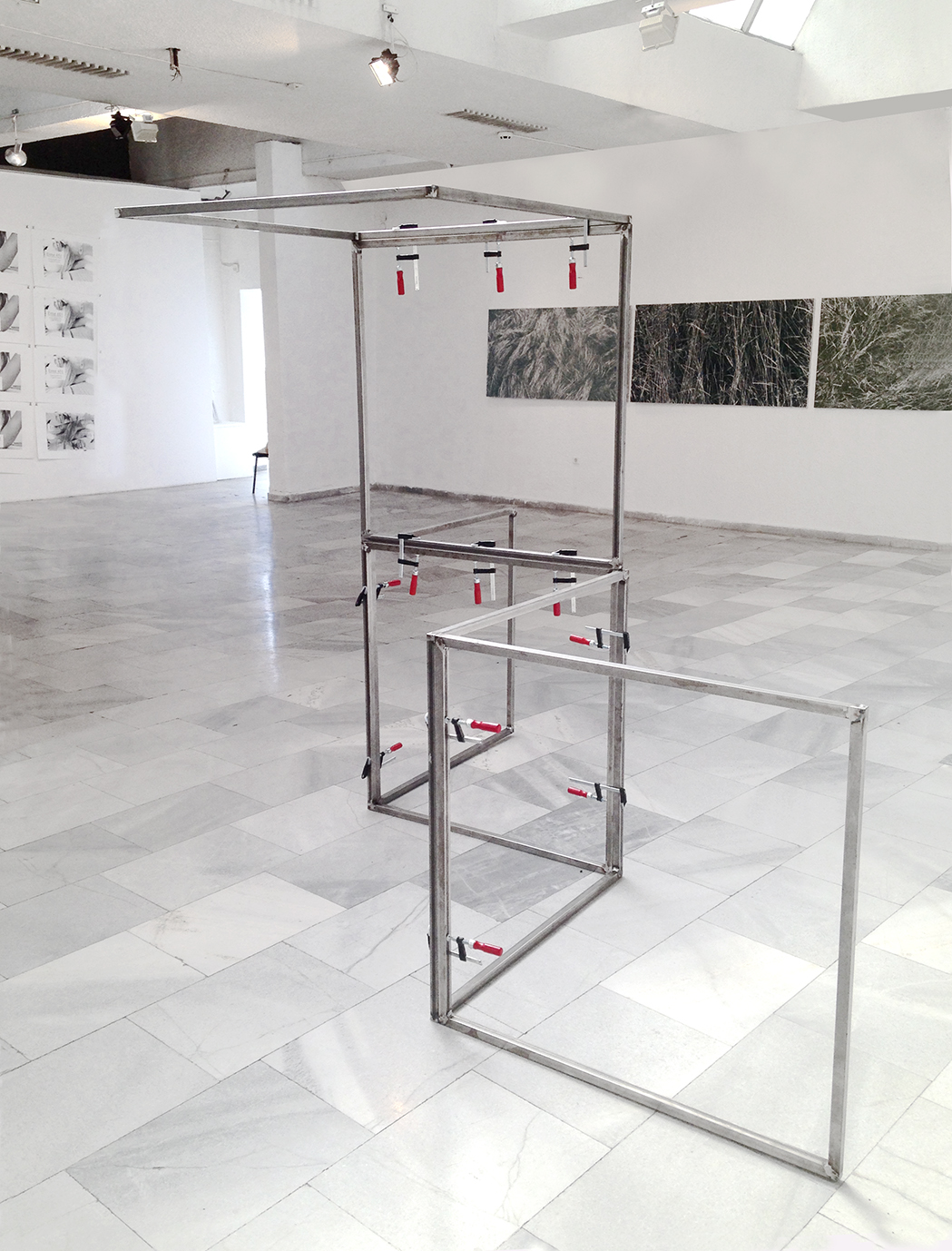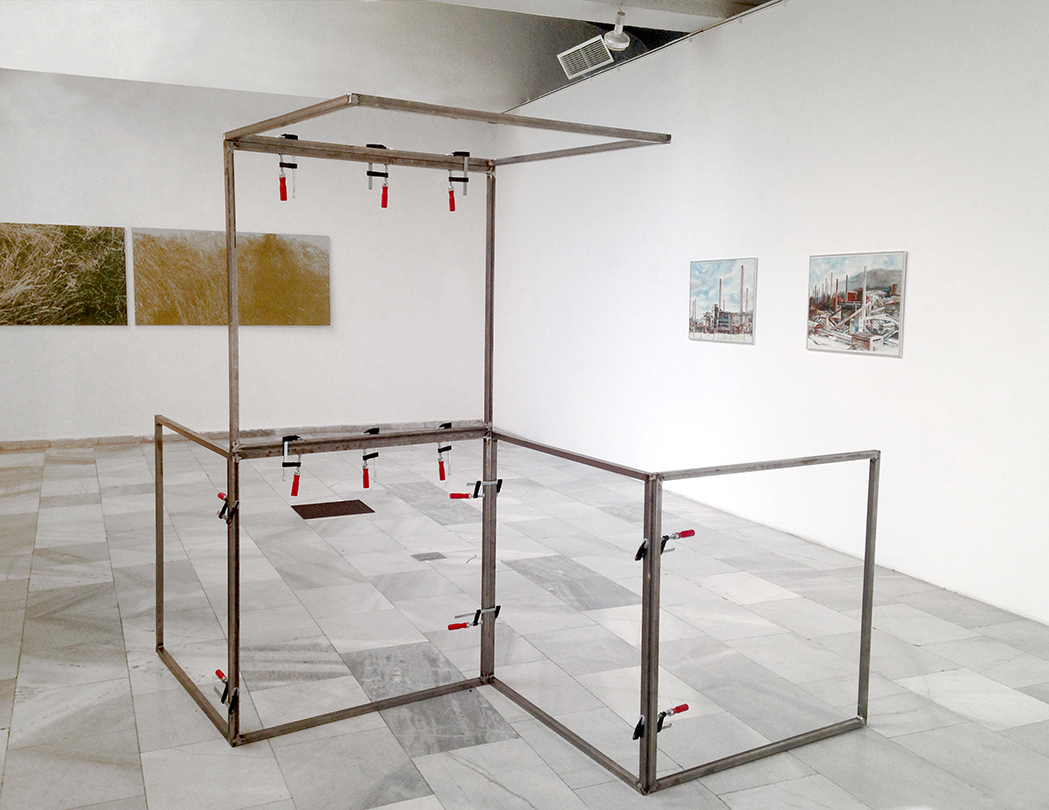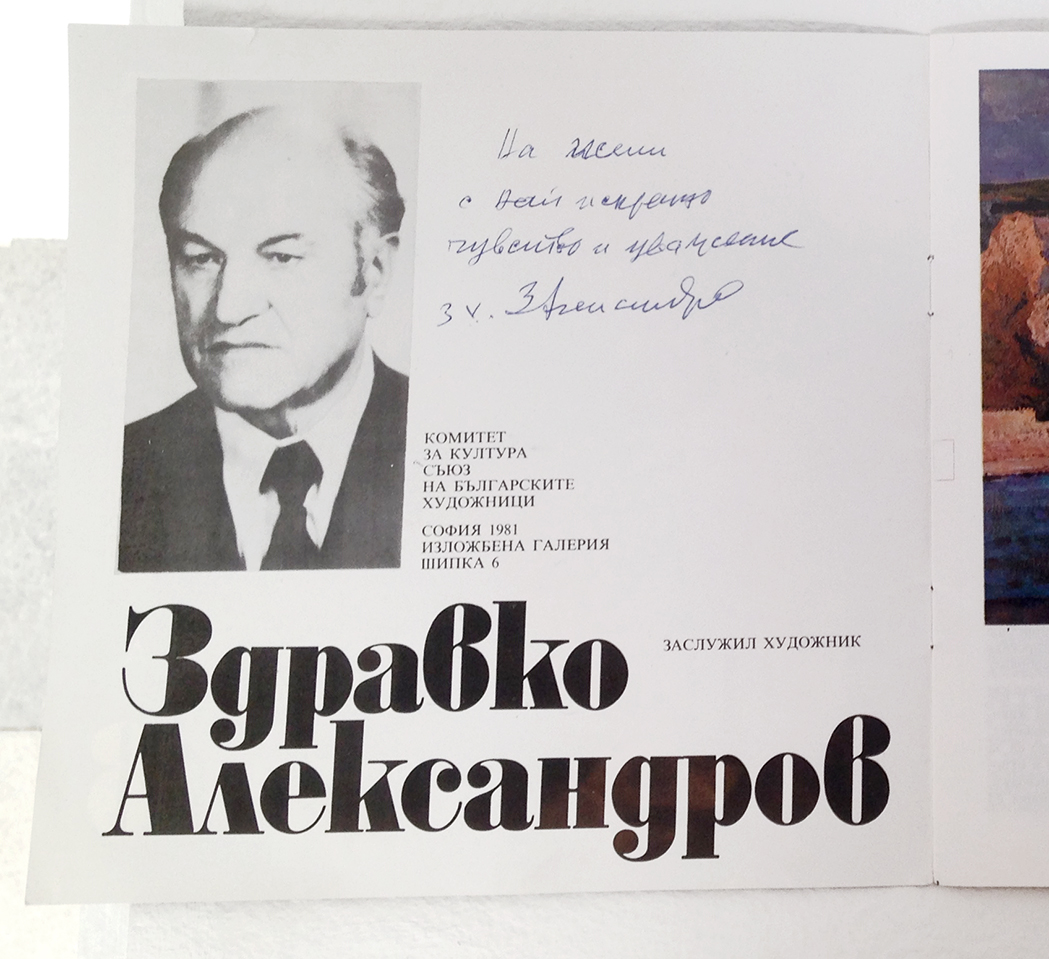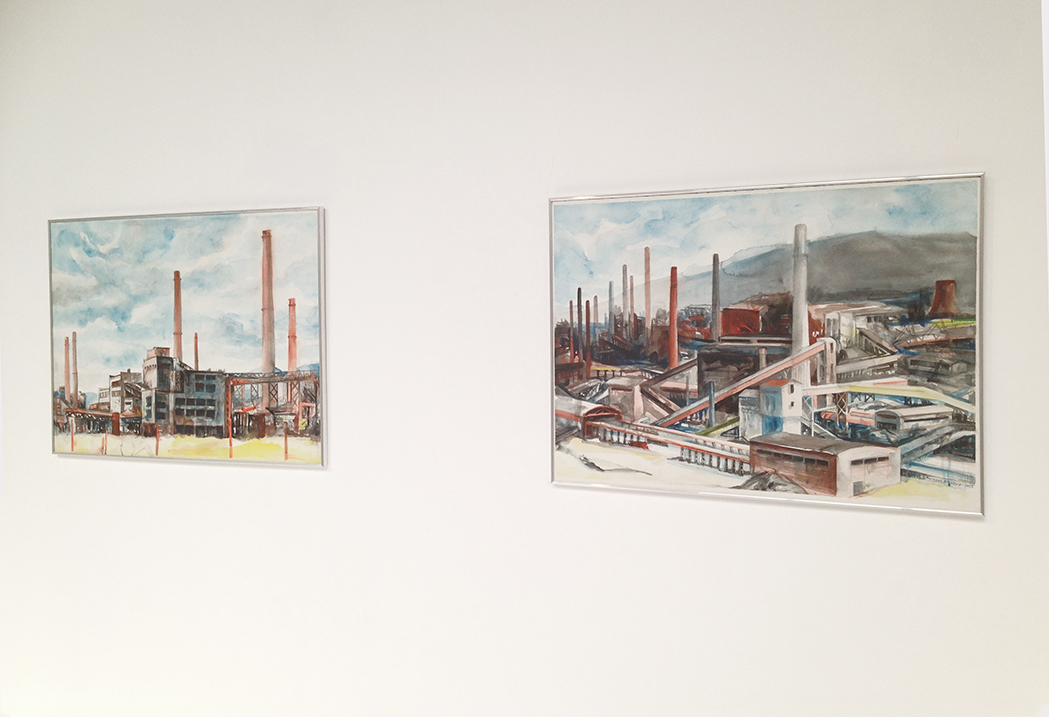Potential Piece
two watercolors on paper, 58 x 77 cm, each
Catalog of the Jubilee Exhibition of Zdravko Aleksandrov, 1981, signed by the artist, 20 x 20 cm.
Metal structure, 2015, six steel modules, 100 x 100 x 3 cm, clamp tools
Found object, metal, dated before 2000, 40 x 40 cm
The work titled, “Potential Piece” is comprised of four elements: a small catalogue from a solo exhibition held by the Bulgarian artist, Zdravko Alexandrov, and dedicated by the author himself; two watercolors; a metal structure made of six identical parts; and a “found” object. They belong to a fragmented whole which could be “read” from different angles.
When Sofia City Art Gallery invited me to show my work, I was already interested in the artist Z. Alexandrov, and in his work “Kremikovtzi”, 1967, which is a part of the museum’s collection. This oil painting intrigued me with its documentary spirit, celebrating industrialization under communism but also with its almost nostalgic softness of colour. However, what is important to me is not simply the pretext for interacting with the SCAG collection, but the subject matter, i.e. Kremikovtzi, which was the largest metallurgical plant in the Balkans that closed down in 2009.
All the elements are linked through this subject matter, but the forms are heterogeneous. The installation is something like a puzzle left for the viewers to solve. Signed by Alexandrov, the small catalogue is a binary ready-made. On the one hand it is merely a booklet, a record stripped of its context; on the other, it is a booklet with an aura lent by the presence of the artist’s signature. This entropy-stricken object, bearing its past, is the axis around which questions revolve: Where is the work? Who is the author? What is the subject?
With their semblance of a classical technique, the watercolors, would trick viewers into believing that those were painted by no other but Alexandrov. However, if in his painting the image of the plant is fresh and full of promise, in the watercolors the buildings look slightly, but noticeably derelict.
The metal structure is composed of modules, inspired by the standardization espoused by the industry. Its open structure is that of a cube, something like an architectural unit. For its part, the small square “found” object lying “discarded” on the ground could easily be overlooked. Its presence raises the question of the meaning and authenticity of the artifact. Is our interest in this ready-made object based on or reinforced only by the history, in which it was embedded by certain people at a certain time?
In “Potential Piece” I have strived to show the equivalence between deindustrialization in Europe and the deactivation of the heroic and progressive nature of a work of art. This is not a harking back to bygone days but an opportunity to rethink discrete systems, be they artistic or economic.






Zdravko Aleksandrov, Kremikovtzi : 1967, oil on canvas, 108 x 80 cm
